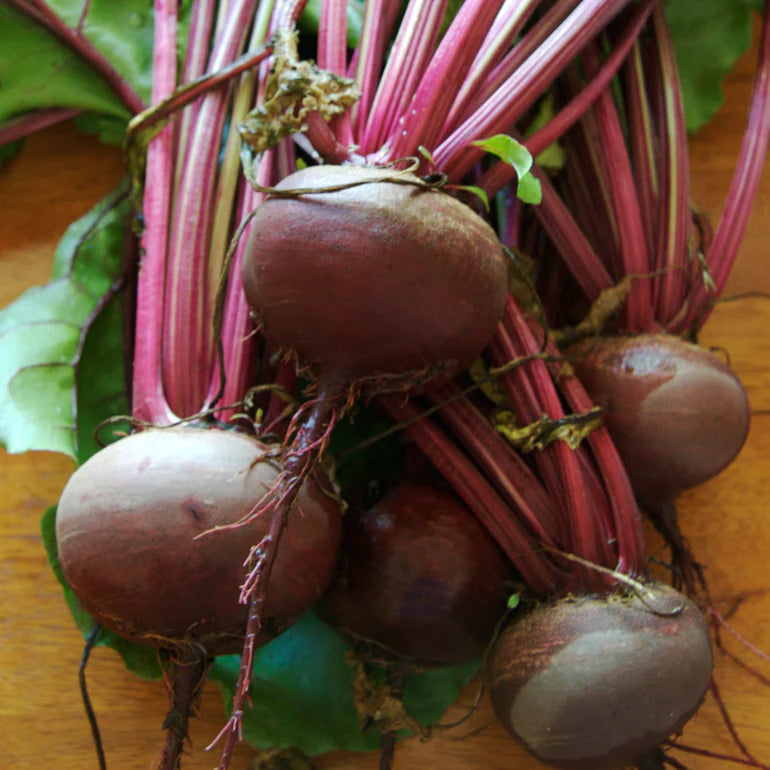My Store
Detroit Dark Red Beet
Detroit Dark Red Beet
Couldn't load pickup availability
DAYS TO MATURITY: 50
Life cycle: Biennial
Detroit Dark Red' is the classic red beet and by far the most popular and widely grown heirloom beet cultivar. It was selected from 'Early Blood' turnip in the late 1800s by a Mr. Reeves (first name unknown) in the town of Port Hope, Ontario, roughly midway between Toronto and Belleville on the north shore of Lake Ontario. It was introduced to commerce in 1892 by the Detroit-based seed company D.M. Ferry and Co. (now Ferry-Morse Seed Company), who presumably gave it the name 'Detroit Dark Red.'
This cultivar is an all-around all-purpose beet, used for fresh market, processing, and home gardens. The roots are good raw, roasted, steamed, pickled, or juiced. The dark green leaves are also delicious and nutritious. It's considered easy to grow and widely adapted.
CULTURE: First-rate crops grow quickly in light or loamy soils with a pH over 6.0. In general, cool temperatures produce the best flesh color. Acute weather fluctuations will cause zoning (white rings) in the roots.
DIRECT SEEDING: Begin early sowings when soil has warmed to 45°F (7°C). Sow 15 seeds/ft. 1/2" deep, rows 12–18" apart. Thin to 1 plant per 3". For a continuous supply of greens and small tender beets, sow seed at 2-week intervals until 8 weeks before regular heavy frosts are expected.
TRANSPLANTING: Sow seed in a cold frame or indoors in early spring, about 5-6 weeks before transplanting out after heavy frosts become infrequent. Sow 1/2" deep, 2–3 seeds per cell in 72- or 128-cell flats. Transplant 3" apart in rows 12–18" apart. Beets transplanted using this method may not be as uniform as direct-seeded beets, and taproots will tangle, requiring the harvester to gently pull out the root while holding back the rest. However, transplanted beets can bring earlier harvests if poor weather conditions persist and interfere with direct seeding.
DISEASES: Keep beets well-irrigated to prevent scab, the same disorder that affects potatoes, causing raised brown rough spots on the mature roots. Internal breakdown or browning is most likely to occur in alkaline soils after prolonged hot, dry periods. This is caused by a boron deficiency. Rotate crops to prevent Cercospora leaf spot, which is especially important for bunching and baby-leaf beets.
HARVEST AND STORAGE: Harvest when roots reach desired size, wash, and store bunches up to 10 days at 32°F (0°C) and 95% relative humidity.
WINTER STORAGE OF ROOTS: Sow about 8 weeks before heavy freeze is expected. Cut tops, wash, and store up to 6 months at 32°F (0°C) and 95% humidity.
Share


